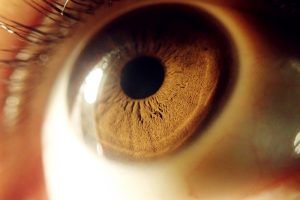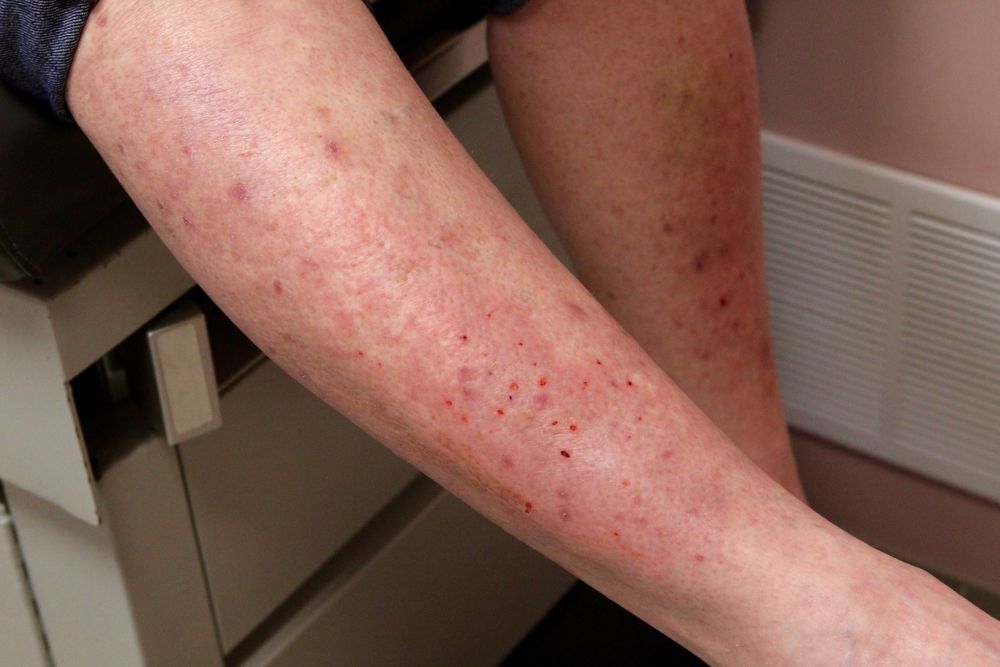Overview of Common Vision Problems & Medications
Medication is not always necessary or the best choice for treating a vision problem, and sometimes, medication isn’t an option at all. But in many cases, it can certainly help with vision problems. Conditions like glaucoma, macular degeneration, and corneal abrasions sometimes require medications to cure the condition, slow its progression, or prevent further complications. (Learn More — Vision Problems & Medications) Glaucoma is a group of eye conditions that damage the optic nerve, usually due to high pressure in the eye. While the damage is not usually reversible, a variety of things can be done to prevent the condition from getting worse. While it is not the only solution, medication can help, including prostaglandins, beta blockers, alpha-adrenergic agonists, carbonic anhydrase inhibitors, rho kinase inhibitors, and miotic or cholinergic agents. (Learn More — Glaucoma Medication) Macular degeneration is an incurable eye condition that affects the retina. It comes in two forms: wet and dry. Generally, medications can help with age-related macular degeneration (AMD). While they don’t always work, these medications can slow the process or even improve one’s sight. Options include ranibizumab, pegaptanib, aflibercept, and verteporfin. (Learn More — Macular Degeneration Medication) Corneal abrasions are conditions in which the eye is scratched, often by debris like sand or gravel. While the severity of this fairly common condition varies, antibiotic eye drops are often prescribed to prevent infection. Generally, you won’t be using the drops long enough to experience severe side effects. (Learn More — Corneal Abrasion Eye Drops)
Vision Problems & Medications
Medication is sometimes necessary to treat eye conditions and vision problems. Of course, this is highly dependent on the condition. Sometimes, the better option might be surgery, corrective wear, or nothing at all. Even the same condition, depending on severity and other factors, may require a different treatment when comparing two cases. Sometimes, a condition can’t be helped with medication. Refractive errors, some of the most common types of vision problems, cannot be treated with medication, for example. Instead, glasses, contact lenses, and surgery are used to correct them as necessary. Other problems may be treated with medication if the supervising doctor deems it appropriate. These are a few of the most common vision-related problems that can be treated with medication:
Glaucoma
Macular degeneration
Corneal abrasion
Glaucoma Medication
Glaucoma damages the optic nerve, generally due to abnormally high pressure in the eye. Unfortunately, this damage can sometimes be so gradual that it is hard to notice. Once your vision is damaged by glaucoma, it cannot be repaired. People who have glaucoma need periodic tests to check their eye pressure, and they will need treatment for the rest of their lives. Treatment can also be used to prevent or dramatically slow vision loss that has not yet occurred.

Lifestyle changes can be used to help with glaucoma, and surgeries can sometimes reduce pressure in the eye. However, medication is usually the chosen approach when it comes to treating glaucoma.
Medications for glaucoma usually come in the form of medicated eye drops.
Prostaglandins (Xalatan, Travatan Z, Vyzulta): These help to relieve pressure by increasing the outflow of your aqueous humor (a liquid inside the eye). By extension, this increase in outflow helps to reduce the pressure that the liquid puts on your eye.
Side effects include darkening of the eyelashes, darkening of the skin of the eyelid, darkening of the iris, mild stinging or reddening of the eye, and blurred vision.
Beta blockers (Betimol, Istalol, Betoptic): Beta blockers reduce fluid production in the eye, relieving pressure in a similar way but through a different mechanism than prostaglandins.
Side effects can include lower blood pressure, impotence, fatigue, slowed heart rate, and slowed breathing. While you should be careful when taking any combination of drugs, always talk to your doctor before taking another drug that can slow your breathing while on beta blockers.
Alpha-adrenergic agonists (Iopidine, Alphagan P, Qoliana): Similar to beta blockers, alpha-adrenergic agonists reduce fluid production in your eye.
Side effects include irregular heartbeat, fatigue, high blood pressure, dry mouth, and eyes that are itchy, red, and/or swollen.
Carbonic anhydrase inhibitors (Trusopt, Azopt): This is another medication that reduces fluid production.
Side effects include tingling in the fingers and toes, needing to frequently urinate, and having a metallic taste in the mouth.
Rho kinase inhibitor (Rhopressa): As the name suggests, these drugs suppress rho kinase enzymes, which play an important role in increasing fluid in the eye.
Miotic agents or cholinergic agents (Isopto Carpine): Like many glaucoma medications, these help to increase the outflow of fluid from the eyes.
Side effects include eye aches, dilated pupils, headaches, nearsightedness, or blurred or dimmed vision.
Macular Degeneration Medication
Macular degeneration is an incurable eye disease in which the central portion of the retina, the macula, deteriorates. The macula focuses your central vision, which is important for fine detail vision as is needed with reading, recognizing faces and colors, driving, and other activities. This condition exists broadly in two forms.
Dry macular degeneration: 85% to 90% of cases
Wet macular degeneration: 10% to 15% of cases
There is no known cure, but it is possible to control your risk of macular degeneration and slow its progress. Diet, exercise, and other lifestyle factors can reduce your chances of developing macular degeneration or slow its progression. Additionally, there is a device called an implantable miniature telescope (IMT) that can be surgically placed in the eye to correct vision. This is not an ideal solution for everyone, but it can help some people with late-stage macular degeneration. Certain medications can be used to treat macular degeneration, although almost all available medications are specifically for age-related macular degeneration (AMD).
Ranibizumab (Lucentis) / bevacizumab (Avastin): Both of these drugs work very similarly. Some studies have compared the two, but there is currently no consensus on which is superior. They work by inhibiting vascular endothelial growth factor (VEGF), a naturally occurring protein that also seems to be linked to macular degeneration symptoms. Of all the drugs discussed, this one generally provides the best results for appropriate candidates.
Though complications rarely arise, they are often the result of the injection rather than the drug. They can include traumatic cataract, detached retina, increased eye pressure, and inflammation in the eye.
Pegaptanib (Macugen): Administered through injections into the eye, these drugs help a small but statistically significant number of patients improve or stabilize their vision. They work by attacking VEGF, for similar reasons to the drugs above.
Side effects can include floaters and eye discomfort. In rare cases, more serious eye problems, like a detached retina, can occur.
Aflibercept (Zaltrap and Eylea): Recommended for wet AMD, this drug’s main benefit is that it requires less frequent injections than something like a Lucentis treatment.
It can help people who have proven resistant to ranibizumab (Lucentis) and bevacizumab (Avastin). While aflibercept is newer and still requires more research, it has thus far proven to be about as effective as the other two drugs among appropriate candidates. It also requires fewer injections, making it arguably better in some cases.
Photodynamic therapy: Often used in conjunction with Lucentis or Avastin, photodynamic therapy uses the drug verteporfin (Visudyne) to treat wet AMD. About 40% to 60% of people with wet macular degeneration are eligible candidates for photodynamic therapy, and about one in six of those patients will show improvement.
Corneal Abrasion Eye Drops
Corneal abrasions are a common eye problem in which the eye’s cornea (an important part of the eye that allows light to enter properly) is scratched. In order to treat it, a doctor has to carefully check the eye for any debris. All debris must be carefully removed from the eye to prevent further scratching. If you believe you may have a corneal abrasion, or even just debris in your eye, see your doctor right away.

Common symptoms of a corneal abrasion include light sensitivity, red eyes, and significant discomfort and pain at the affected site. While corneal abrasions often heal on their own, they may require surgery in severe cases. Whatever the case, a doctor will often prescribe antibiotic eye drops to prevent infection. Antibiotic eye drops (Moxeza, Vigamox) are generally safe and easy to use. As with any prescription drug, they should only be used as needed. This is especially true for antibiotics, as unnecessary use can slowly make bacteria more resistant to these drugs. Common side effects include general discomfort in the eye, redness, dryness, tearing, itching, burning, moderate temporary vision changes, and mild pain. In rare cases, you may experience more serious symptoms that warrant calling your doctor. A patient will rarely use antibiotic eye drops for very long.
References
Refractive Errors. (July 2019). National Eye Institute.
Glaucoma: Symptoms & Causes. (November 2018). Mayo Foundation for Medical Education and Research (MFMER).
Glaucoma: Diagnosis & Treatment. (November 2018). Mayo Foundation for Medical Education (MFMER).
Glaucoma Treatment: Eye Drops and Other Medications and Research. (April 2019). AAV Media.
What Is Macular Degeneration? American Macular Degeneration Foundation.
Macular Degeneration Treatment. (March, 2018). AAV Media.
Corneal Abrasion: How to Treat a Scratched Eye. (July 2019). AAV Media.
Cornea of the Eye. (April 2017). AAV Media.
Antibiotic Eye Drops. (August 2019). American Academy of Ophthalmology.
Moxifloxacin (Ophthalmic Route). (August 2019). Mayo Foundation for Medical Education and Research (MFMER).

Related Articles

Alzheimer's Treatment
Alzheimer’s disease is a progressive disease that...

Overview of Common Vision Problems & Medications
Medication is not always necessary or the best choice...

Dermatitis Herpetiformis Treatment Options (Celiac Rash)
Celiac disease is caused by autoimmune reactions that...

Nonaddictive Medications for Anxiety
There are a number of nonaddictive medications on the...
